Jutland: Strategic Background
The Battle of Jutland,1 the greatest clash of dreadnoughts in history, was fought in the North Sea on May 31st and June 1st, 1916. This was the titanic clash of the British and German fleets that both sides had been waiting for since the outbreak of war.
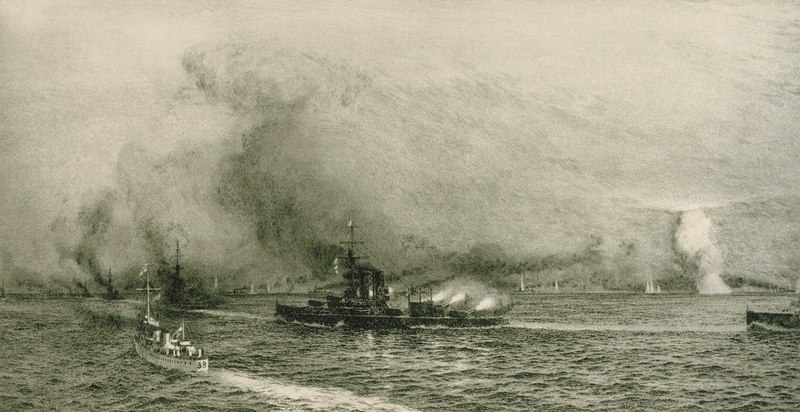
At the beginning of the war, both sides had known that the primary use of seapower would be to interdict the enemy’s trade. The British did this by declaring a blockade, and searching any ship that tried to enter the North Sea, while the Germans initially dispatched commerce raiders against the British. These were quickly hunted down, which led to the switch to submarines.
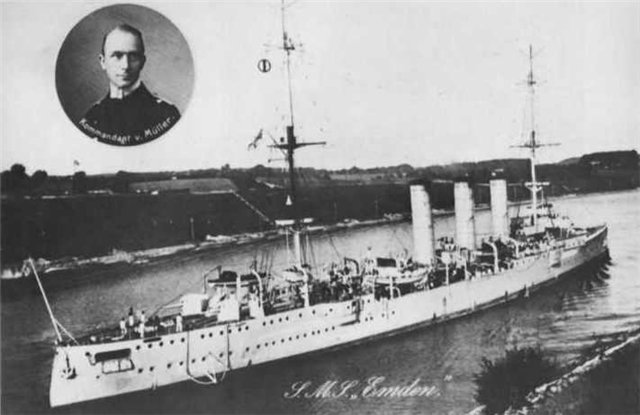
SMS Emden, one of the most effective German commerce raiders
The British blockade proved very effective, and the restrictions it imposed on the German economy were vital to the eventual Allied victory. However, it relied heavily on converted merchant ships to do the actual inspection, and they would have been easy prey for the Germans in the event that the British fleet was destroyed.
The primary German force was the High Seas Fleet, based in Wilhelmshaven, on the North Sea coast of Germany, to the west of Denmark. The British based their main body, the Grand Fleet, in the Orkney Islands north of Scotland, while their battlecruisers were based out of Rosyth, not far from Edinburgh, in southern Scotland. They were positioned there to make it easier to intercept any attempt by the Germans to repeat their earlier battlecruiser raids on the British coast. These raids were often covered by the entire High Seas Fleet in an attempt to trap detachments of the British fleet, wearing it down until it could be defeated in open battle. So far, the Germans had done fairly minimal damage to the British coast, and had been unable to bring the British to action. The British had likewise been unable to do significant damage to the Germans, the biggest ship lost so far in the North Sea being the German semi-battlecruiser Blucher at the Battle of Dogger Bank. Everyone was getting tired of running aimlessly around the North Sea, and wanted action.
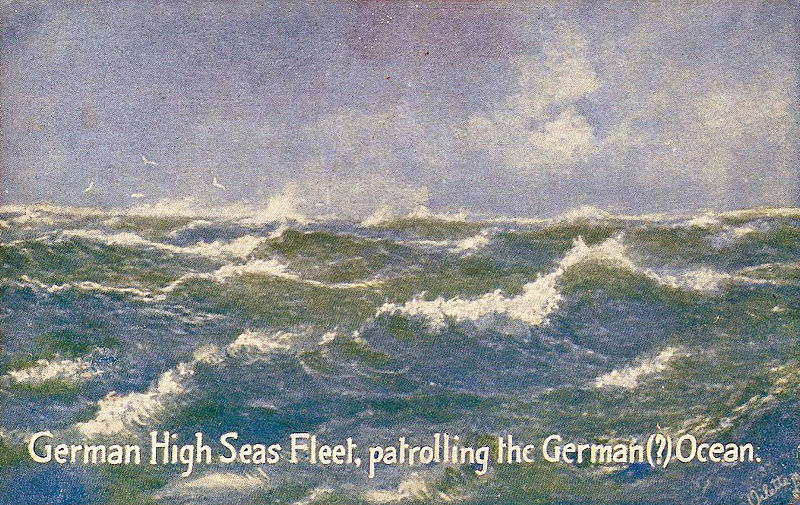
A British postcard making fun of the German fleet for its reluctance to come out
While the advantages for the Germans in the event of a British defeat are obvious, there would have been substantial advantages to the British in the event of a victory, too. There had long been advocates of a ‘Baltic Strategy’ in the RN, the idea of landing a force on the Baltic coast of Germany. However, it had been considered too risky with the German fleet still active, capable of either appearing behind them in the Skaggerak or transiting the Kiel Canal and coming from the side. That said, the main advocate of the Baltic Strategy was Jackie Fisher, who had many ideas, some very good and some very bad. A more likely result would have been the British running convoys through the Baltic to St. Petersburg, which would have greatly increased the British ability to supply Russia. The follow-on effects of that are massive,2 but outside the scope of this post.
Jutland: Forces and Commanders
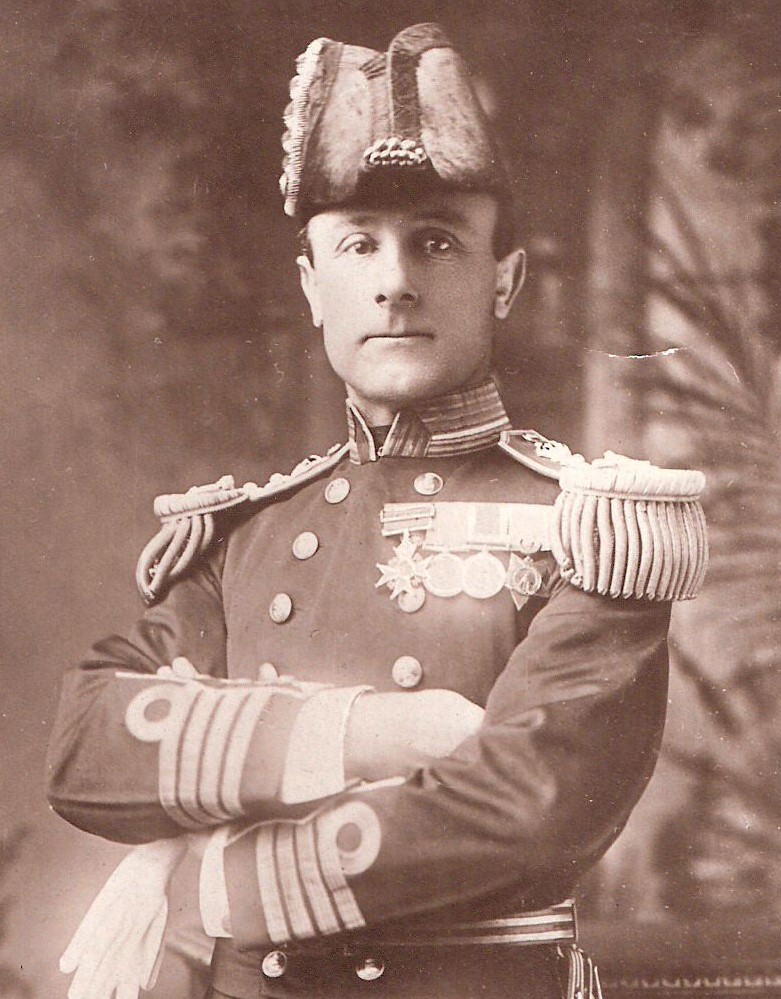
John Jellicoe in 1916
The main British battle force was the Grand Fleet, under the command of Admiral Sir John Rushworth Jellicoe, a cautious officer from a middle-class background. Jellicoe was one of the RN’s leading gunnery officers who had served, among other posts, as the second-in-command of HMS Victoria, a senior officer in the relief force raised during the Boxer Rebellion, during which time he was badly wounded, Director of Naval Ordnance and Third Sea Lord.3 On the outbreak of war, Churchill appointed him to command of the Grand Fleet.
The Grand Fleet itself had 28 dreadnought battleships at Jutland, out of the 32 assigned to it at that time.4 There were 6 ships with 15" guns, 1 with 14", 11 with 13.5" and 10 with 12", a total broadside of approximately 400,000 lb.
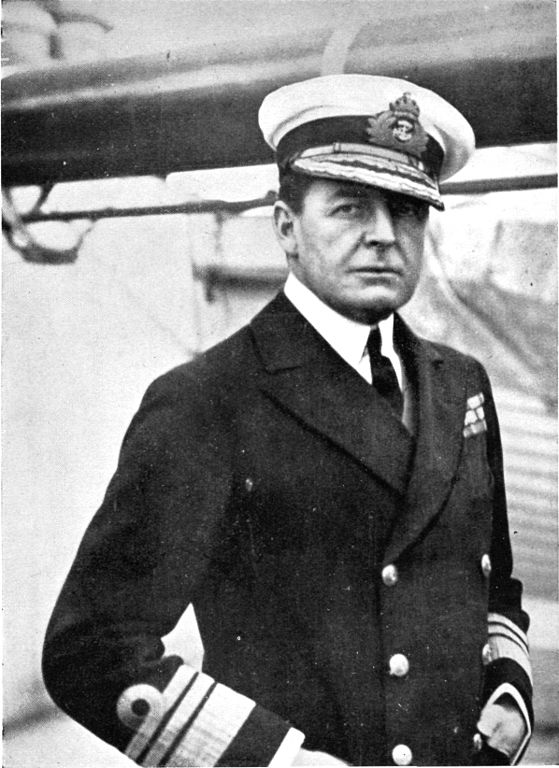
David Beatty in 1916
The British battlecruisers were a separate unit, under the command of Vice Admiral Sir David Richard Beatty. Beatty was a very different man from Jellicoe, flamboyant, ambitious and obsessed with his own legend. He had risen rapidly through the ranks, and distinguished himself in the Sudan, commanding gunboats at the Battle of Omdurman. He also took part in the suppression of the Boxer Rebellion, and was wounded there, although not as severely as Jellicoe. His career afterwards was somewhat less distinguished, as he turned down a post as second-in-command of the Atlantic Fleet on the urging of his wife, which nearly forced him to retire. His career was saved by Churchill, who had met him in the Sudan and liked him very much, and who put him in charge of the battlecruisers.
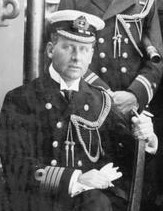
Hugh Evan-Thomas
Under normal circumstances, Beatty would have had 10 battlecruisers, but he went into action with only 6. One was in drydock following a collision, while three others had been detached for gunnery training, and ended up sortieing with Jellicoe. To replace them, Beatty had been given the 5th Battle Squadron, under Rear Admiral Hugh Evan-Thomas, composed of four Queen Elizabeth class battleships, the most powerful vessels afloat. They were capable of 24 kts, as opposed to 21 for most of the British battleships and 25-28 for the battlecruisers.5
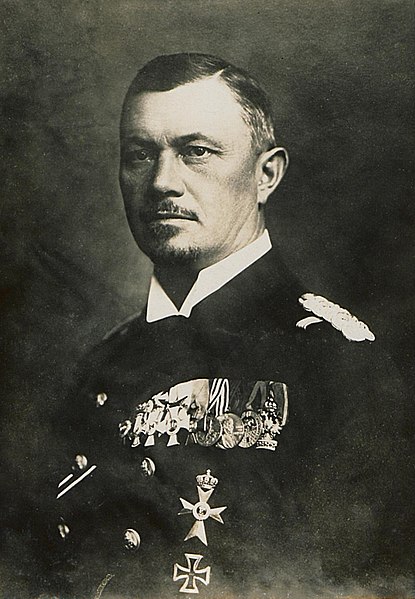
Reinhard Scheer
The main body of the High Seas Fleet was commanded by Vice Admiral Reinhard Scheer, a torpedo specialist known as ‘the man in the iron mask’ for his strict discipline. His career was less colorful than those of his British opponents, and he was the third wartime commander of the High Seas Fleet, after his predecessors, Friedrich von Ingenohl and Hugo von Paul, had been replaced for being too cautious.
Scheer had only 16 dreadnoughts, along with 6 pre-dreadnoughts brought along to bolster the fleet, although unlike the British, he had lost none of ships to the yard. His fleet suffered in firepower compared to the British, having a total broadside weight of approximately 200,000 lb, and no guns larger than 12".
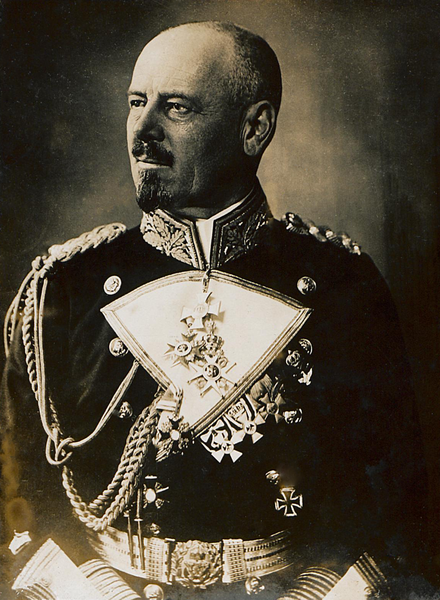
Franz von Hipper
Like the British, the Germans concentrated their battlecruisers in a separate force, the I Scouting Group under Franz von Hipper. Hipper, another torpedo officer, was unusual in that he had avoided almost all formal military schooling and staff positions during this rise to Flag rank. He had become friends with the Kaiser, which helped a lot. He was placed in command of the I Scouting Group in 1913.
Hipper's Scouting Group had only 5 battlecruisers, like their battleship brethren somewhat underarmed relative to their opponents, but significantly better protected.
In late May of 1916, these men would take their ships into the North Sea, to meet for the only time, and fight the greatest naval battle of the war. The beginning of the clash will be our subject next time.
A note on sources:
I used two books for my primary reference, in addition to the internet. One was John Campbell’s Jutland: An Analysis of the Fighting. This is universally agreed to be the best book from a factual perspective, but it is a technical analysis, and basically impossible to read. I bought a copy in 2016, as all of my other books cited it, intending to read it before the 100th anniversary, and failed completely. The other book was Nicholas Jellicoe’s Jutland: The Unfinished Battle. It’s good, and much more readable than Campbell. There are also some lovely personal touches, as Nicholas is Admiral Jellicoe’s grandson. (I got to meet him in 2017, and he was very nice, even when I was pestering him with all sorts of weird technical questions.) He has a website, which I would highly recommend, and the animation he narrated is well worth a watch.
1 Jutland is the main peninsula that makes up the body of Denmark. It was the closest landmass to the battle, so it became the English name. The Germans call the action Skaggerak, after the strait between Denmark and Norway. Why is a topic we'll come back to later. ⇑
2 Note the potential for early British intervention in the Russian Revolutions. ⇑
3 The officer in charge of ship and equipment procurement ⇑
4 3 of the remaining 4 were in drydock, while the last, Royal Sovereign, had been in commission only 3 weeks and wasn't ready to go into action. ⇑
5 I counted these 4 as part of the 28 that Jellicoe had, as they rejoined his force partway through the main fleet action. ⇑

Recent Comments